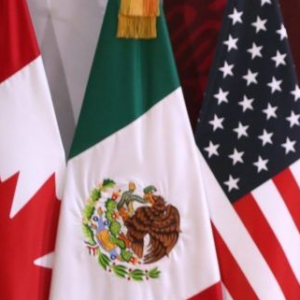United States–Mexico–Canada Agreement (USMCA): a lot of noise for almost nothing?
The United States–Mexico–Canada Agreement (USMCA)[i] came into force on July 1, 2020, which is replacing the North American Free Trade Agreement (NAFTA). The new agreement between Canada, the United States and Mexico signed in Buenos Aires on November 30, 2018, as modified by the Protocol amending in Mexico City on December 10, 2019.
Historically, since 1994, the NAFTA has been established on the values of trilateral free market trade, the contribution of the economic growth, and higher living standards for the populations of the three-member countries.
The NAFTA values to establish a free trade area in accordance with the Agreement, to support trade between the parties and their economic growth, to preserve and develop trade and production on a regional scale by further encouraging the production of goods and materials and their supply in the territory of the parties to the Agreement, transparent and predictable legal and business framework for operational planning, which supports the further development of trade and investment, including in the digital sector and the creative and innovation industries, to promote the efficiency and transparency of customs procedures which reduce costs and ensure predictability for importers and exporters remain intangible in the USMCA.
One of the main targets of the USMCA is boosting automobile manufacturing. According to the new agreement, 75% of a vehicle’s parts should be manufactured in one of the three countries.
There are some minor differences between NAFTA and the USMCA, including provisions concerning the legal protection of the labor market, environmental protection, digital commerce, food security, intellectual property protection and the fight against corruption. Another difference is the “Sunset or Review clause.” Based on this clause, the terms of the agreement expire after 16 years. The agreement is also subject to review every six years by the State parties to decide the extension of the agreement.
Finally, the entry into force of the USMCA supposed to be a new historic chapter for North American trade by supporting a balanced and reciprocal free and fair trade, economic growth and environmental protection in North America. However, the USMCA keeps control and domination of the US in specific issues such as national security, market access, digital trade, dairy productions and enforceable labor standards. Despite all of the efforts to negotiate and regulate the North America free market, many problems and issues such as protection of the Canadian dairy industry, the Mexican labor standards, steel and aluminum tariffs and climate change remain unresolved.
[i] Agreement between the United States of America, the United Mexican States, and Canada (2019),
Suggested citation: Dr. Abbas Poorhashemi, United States–Mexico–Canada Agreement (USMCA): a lot of noise for almost nothing?, Reddit, July 12, 2020, https://www.reddit.com/user/CIFILE/comments/hpne2g/united_statesmexicocanada_agreement_usmca_a_lot/


